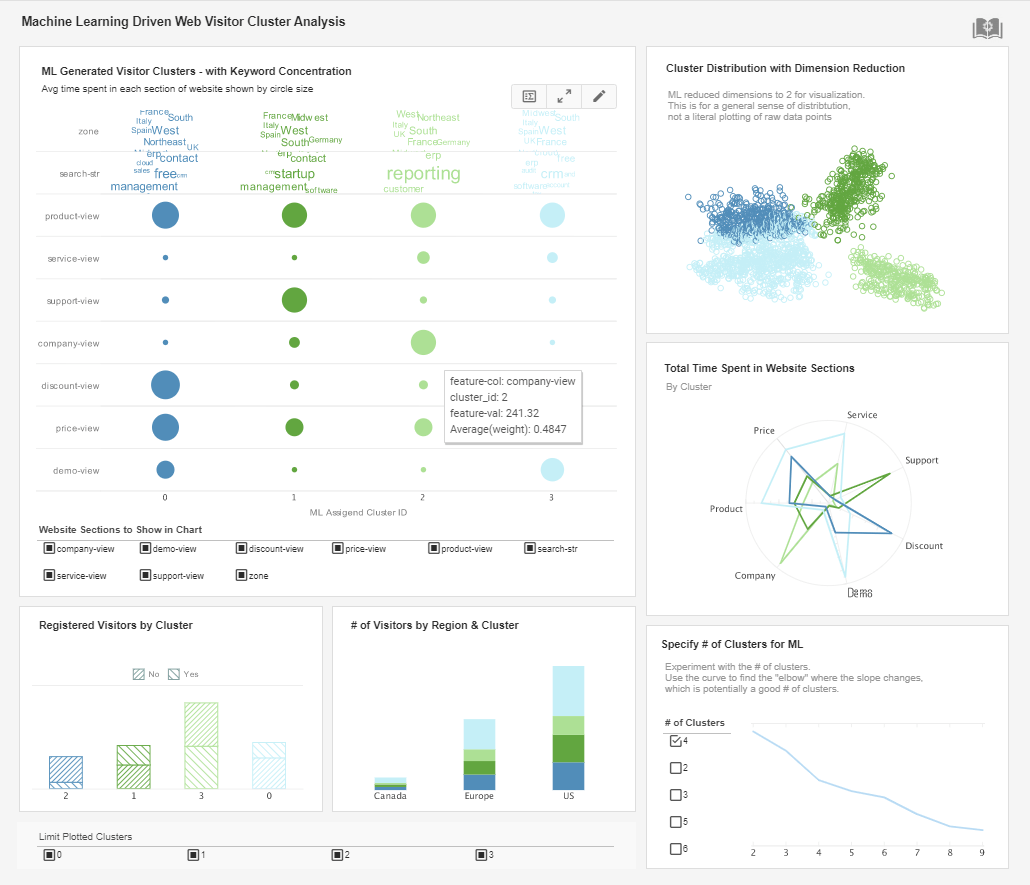What Is Machine Learning Operations?
To guarantee that machine learning models can be deployed, monitored, and maintained at scale, the technique of "machine learning operations" (MLOps) integrates machine learning with DevOps. MLOps gives businesses end-to-end visibility into the machine learning lifecycle while automating processes to streamline the entire machine learning pipeline, from development to deployment. We will go through the definition of MLOps, its advantages, and some best practices for using it successfully in this post.
What is MLOps?
To guarantee that machine learning models can be deployed, monitored, and maintained at scale, the technique of "machine learning operations" (MLOps) integrates machine learning with DevOps. MLOps offers enterprises a platform for quickly developing, evaluating, and deploying machine learning models. Moreover, it makes it possible for businesses to manage machine learning models as they change over time.
Data preparation, model training, testing, deployment, and monitoring are just a few of the tasks involved in MLOps. It makes use of the DevOps tenets of continuous integration, continuous delivery, and continuous deployment to automate these processes and guarantee their efficient and reliable execution.
| #1 Ranking: Read how InetSoft was rated #1 for user adoption in G2's user survey-based index | Read More |
Benefits of MLOps
For businesses wishing to expand the deployment of machine learning models, MLOps provides a number of advantages. Among the main advantages are:
Improved Efficiency
With MLOps, businesses can automate every step of the machine learning pipeline, from development to deployment. MLOps assists enterprises in reducing the time and effort needed to create and deploy machine learning models by automating procedures and offering end-to-end insight into the machine learning lifecycle.
Increased Agility
Organizations can easily react to shifting business needs and data sources thanks to MLOps. MLOps helps enterprises to quickly construct and deploy machine learning models that can be updated as new data becomes available by automating processes and offering end-to-end insight into the machine learning lifecycle.
Better Interaction
The operations teams, developers, and data scientists work together more often thanks to MLOps. MLOps helps enterprises eliminate silos and promote a collaborative culture by offering a single platform for machine learning development and deployment.
Improved model performance
Organizations may track the effectiveness of machine learning models in use and adjust them as necessary using MLOps. Organizations may gradually increase the precision and efficacy of their machine learning models by observing and improving the models over time.
Best Practices for Implementing MLOps
Effective MLOp implementation involves thorough preparation and execution. Best practices for using MLOps include the following:
Create a clear plan of action
Organizations should have a clear plan outlining their goals, objectives, and expected results before deploying MLOps. The major stakeholders and their respective roles and duties should also be identified and defined in this approach.
Streamline procedures
A systematic strategy to the development and deployment of machine learning is necessary for MLOps. To achieve consistency and dependability, organizations should create standardized procedures for data preparation, model training, testing, deployment, and monitoring.
Automate operations
MLOps uses automation to speed up the development and deployment of machine learning. To cut down on the time and effort needed to construct and deploy machine learning models, organizations should automate procedures wherever feasible.
Use the appropriate tools
To enable machine learning development and deployment, MLOps needs a variety of technologies. To make sure they have the skills required for a successful MLOps deployment, organizations should employ technologies made for MLOps, such as MLflow, Kubeflow, and TensorFlow Extended.
 |
Learn about the top 10 features of embedded business intelligence. |
Put scalability first
Organizations may use MLOps to scale up the deployment of machine learning models. To do this, businesses should start by focusing on scalability and creating systems and procedures that can handle growing amounts of data and machine learning models.
Encourage a collaborative culture
Data scientists, developers, and operations teams must work together on MLOps. By fostering open communication and the cooperation of cross-functional teams, organizations should promote a culture of collaboration.
Implement governance and monitoring
To make sure that machine learning models are functioning as anticipated and that they are in line with corporate goals, MLOps needs continual monitoring and oversight. To identify problems and ensure compliance, organizations should implement effective monitoring and governance procedures.
Put security and privacy measures in place
Processing huge volumes of data, some of which may be private or sensitive, is a need of MLOps. Companies should have strong security and privacy measures in place to safeguard data and guarantee compliance with relevant laws.
Spend money on education and training
Data science, software engineering, and operations are just a few of the knowledge and abilities needed for MLOps. Businesses should spend money on education and training initiatives to upskill staff and make sure they have the skills needed to implement MLOps successfully.
 |
Read the top 10 reasons for selecting InetSoft as your BI partner. |
Applying MLOps presents challenges
MLOps implementation may be difficult, particularly for businesses that are just getting started with machine learning. Among the principal difficulties are:
Complexity
Data preparation, model training, testing, deployment, and monitoring are just a few of the many procedures involved in MLOps. Organizations must have a thorough grasp of these processes, as well as the tools and technology that support them, in order to implement MLOps.
Cultural Shift
A culture shift in how businesses approach the development and deployment of machine learning is necessary for MLOps. Data scientists, developers, and operations teams need to collaborate more, and organizations need to break down silos.
Knowledge Gap
Data science, software engineering, and operations are just a few of the knowledge and abilities needed for MLOps. Employees with the appropriate skill sets for MLOps implementation may not be present in many firms.
Data Accuracy
For the development and application of machine learning models, MLOps depends on high-quality data. To create accurate and efficient machine learning models, organizations must make sure their data is clean, consistent, and dependable.



